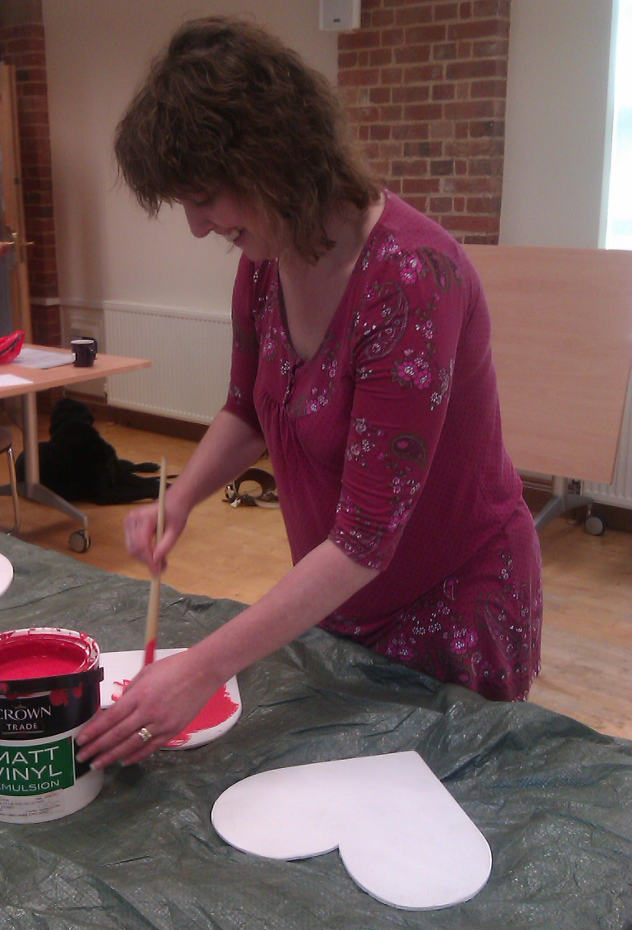Background and Results
Background to the Project
This project was developed after Rebecca Yeo and Andrew Bolton worked on a broadly similar project in Bolivia. This film made by Jazz Shaban for the World Health Organization shows some recent responses to the murals created by disabled people in Bolivia:
Text only description of the video
Here is a more detailed report of the work in Bolivia.
Context
This project was set up in the context of increasing personalisation, whereby disabled people have greater choice and control over services received. For more background, see this report on personalisation from the Social Care Institute of Excellence.
Since the project began, the government began its programme of huge cuts to welfare benefits and social services. Disabled people are particularly badly affected by these cuts and are organising in response, see for example The Hardest Hit website.
Who is involved
All the researchers and participants on this project are disabled people. We have tried to work with disabled people living in a wide range of different circumstances. This has included people with learning difficulties in Somerset; ex-servicemen, LGBT group and particularly isolated disabled people working through the well-established disabled people's organisation Norfolk Coalition of Disabled People.
We encountered the most difficulties working with the most marginalised people. In Bristol we tried to focus on disabled asylum seekers and refugees. We contacted many disabled people organisations and refugee community organisations to find disabled asylum seekers. In the end we relied on inviting individuals encountered through Bristol Refugee Rights. We did not find enough people who were interested and able to take part in this way. We found that a) this group is so severely marginalised as to be difficult to find people b) among some people there was reluctance to identify as a disabled person c) several of the people that were invited moved away, were detained, were too severely ill, or most commonly have too many difficulties with basic survival to contemplate being involved with something else. We therefore broadened the work in Bristol to include a wider group of disabled people.
We also tried to involve disabled gypsies but were not successful. We recommend to the Wheels of Change, a research project carried out by Leicester Centre for Integrated Living.
How we do it
We start by discussing with people what they enjoy, what they would like to change and what barriers they face in achieving their preferred lifestyles. We concentrate on what messages people would like others to understand about their lives. Then people draw, use clay or use photographs to make images showing their most important messages.
These images are put together into a draft design by public artist Andrew Bolton. The design is then discussed with participants and any alterations made. Andrew then marks up boards with the design ready for painting. Methods are adapted to try to ensure that everyone that wants to can take part in as much of the process as they want to.

Here, a blind person is painting parts of the mural. Pieces of wood have been cut into the shapes required so that she can feel the edges.
Finding a site
In some places finding a site was easier than in others. We look for prominent accessible blank walls that many people will go past and where passers-by will be able to stop for long enough to be able to take in the messages. In some cases we have needed to get planning permission; in other places it has been more straightforward.
The results of our work
The work has resulted in artwork installed in each location, a photographic exhibition of images of the work, as well as written briefings, reports and recommendations.
Here is a summary of the full report (pdf document).
The details of the full report can be found here.
We had a busy schedule of exhibitions in 2013, including:
- 11-15th February, Parliament, London
- April, Disability History event, Bristol
- 3rd May - 26th July, Somerset County Hall, Taunton
- 20-24th May, TUC Disabled Workers Conference, London
- 7-8th June, 'What are we hiding?' conference, University of Manchester
- 24th June - 12th July, The Guardian, London
- August - September, Greater London Authority, London
The photographic exhibition of this work is available for use free of charge to Disabled Peoples Organisations and at a negotiable charge to others. Please contact us if you think your group could use this, or if you have a suggestion for an exhibition venue.
Images of the work of different sizes, including postcards are available for sale, please contact us for details.
Please watch this site for details of further results of this project as they are completed.

